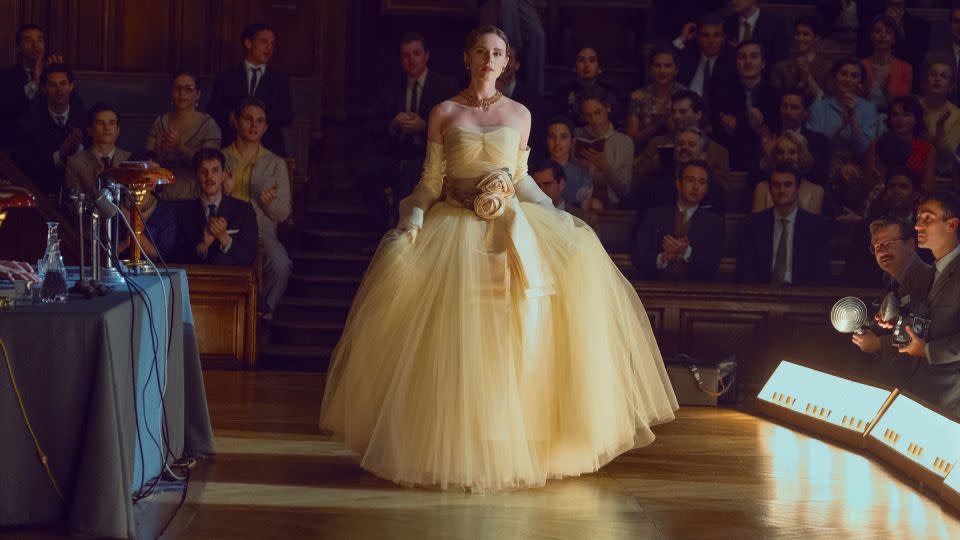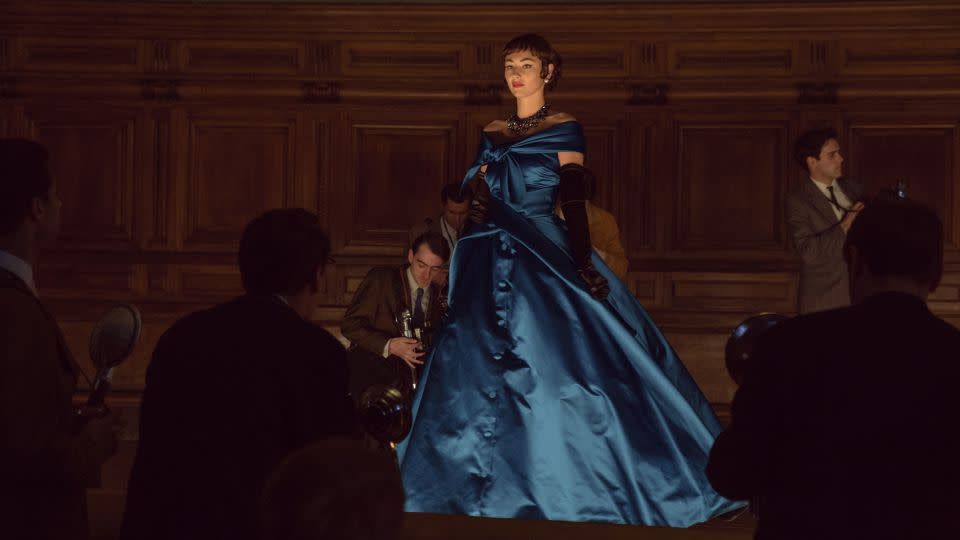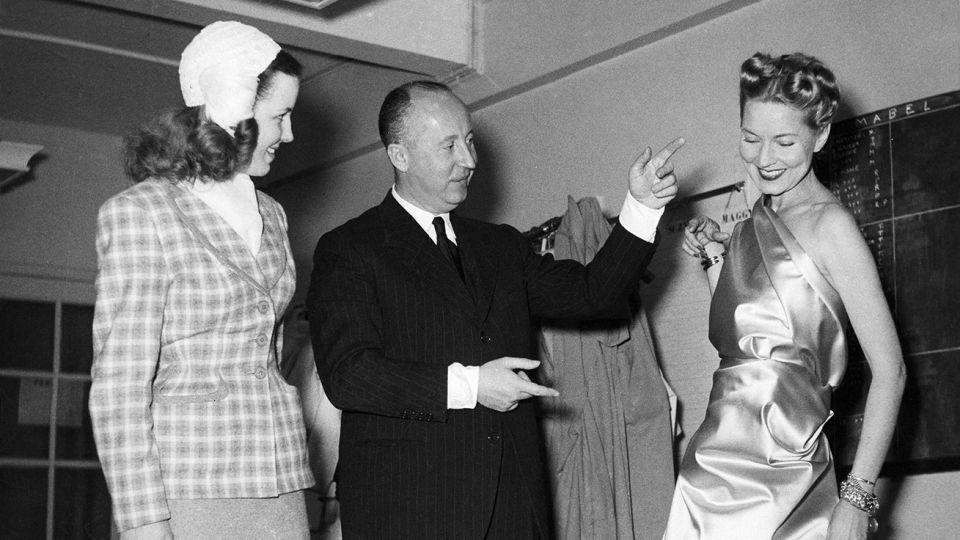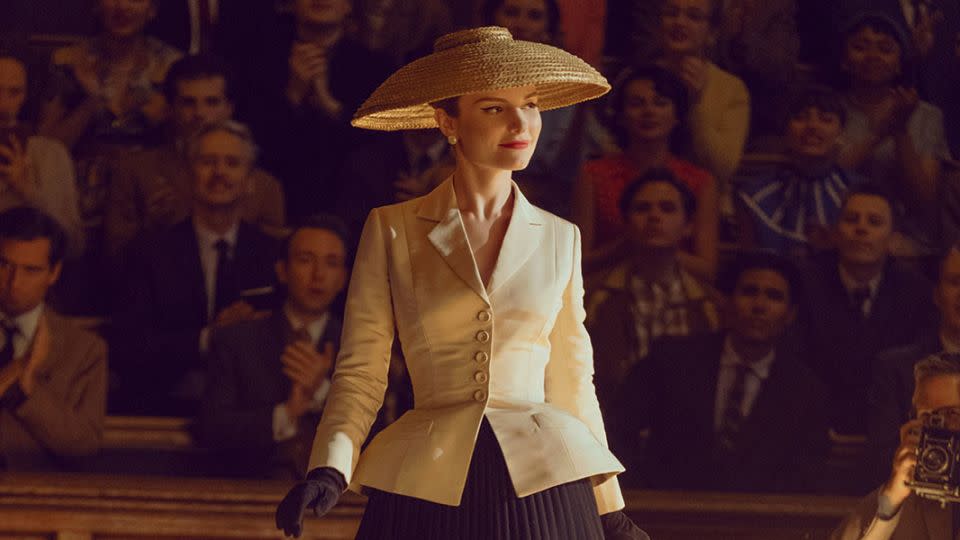How to recreate the most famous fashion collection of all time? New series ‘The New Look’ dives into Dior
- Oops!Something went wrong.Please try again later.
- Oops!Something went wrong.Please try again later.
“From episode one to episode nine, we were like people after the war: Very pleased when we finally got the New Look!” explained costume designer Karen Muller Serreau, with a laugh. For a show named after Christian Dior’s 1947 revolutionary fashion line, after all, new Apple TV+ series “The New Look” takes its time getting to it, debuting the collection only in its final episode.
Dior’s unveiling of his “New Look” collection signified the return of Paris as the fashion capital of the world after the Second World War. Dior’s first collection under his own name, titled “Corolle,” featured snatched waists and full skirts that have more than stood the test of time, with countless imitations (as well as revisitations from the brand itself) hewing close to the silhouette in the years since its debut.


The story of these groundbreaking designs — and the man who created them — is the subject of “The New Look,” which follows the designer (played by Ben Mendelsohn) and his creative contemporaries, including Pierre Balmain (Thomas Poitevin), Cristóbal Balenciaga (Nuno Lopes) and Coco Chanel (Juliette Binoche) as they revolutionized the fashion industry.
To fulfill his dream of bringing joy back to France with his designs, Dior made the difficult decision to come out from the shadow of his longtime mentor designer Lucien Lelong (John Malkovich) and launch his own fashion house. Going it alone, his luxurious looks dueled with Chanel’s pared-back aesthetic in particular: “Dior’s designs are extravagance,” Chanel dismisses her rival to a reporter in one scene. “I have no time for extravagance. No. Simplicity, that’s my style.”

“This show is about the survival of the fashion industry and how inventive people can find ways to be able to continue. Somehow they’ll always find a way to create,” Muller Serreau told CNN Style. But Dior’s journey was not always easy. Set during and in the immediate aftermath of World War II, “The New Look” and its visuals more broadly reflect the austerity of the time.
Muller Serreau’s research process for “The New Look” involved trawling the house of Dior’s archives for day, cocktail and evening dresses, and saw her making up twelve — out of 70 — outfits from the line that feature on the show, along with their accompanying hats, shoes, gloves and jewelry. Muller Serreau described her relationship with the fashion house as “collaborative,” with Dior’s archivists taking a vested interest in the process, keen on reproducing certain looks over others to highlight the breadth and beauty of the “New Look” line.
(She also studied the work of the other designers featured on the show to get a feel for their aesthetics, both personal and professional, and developed recreations with her team accordingly.)
She worked to ensure “The New Look” would be identifiable to modern viewers by selecting outfits that had an ahead-of-their-time quality, such as the strikingly contemporary “Jungle” look — like its name suggests, a leopard print midi dress that was the first iteration of animal print on the runway.
As Dior was still in possession of the look’s fabric, Muller Serreau was able to faithfully recreate the entire ensemble. Other looks, unfortunately, had not stood the test of time, existing now solely in Dior’s archives in the form of sketches or swatches — though these also became key points of reference.

From a costumiere’s perspective, “The New Look” offered Muller Serreau the opportunity to reflect fashion and cultural trends of the era more broadly: clothes were “skimpier” during the war years because fabric was at a premium, she explained. And they were produced at a far smaller scale, too; as Chanel espouses “simplicity” and Dior envisions his designs being worn by “30 women,” it’s a far cry from the luxury conglomerates of today.
While a second season has not yet been confirmed, season one is but a drop in the bucket of Dior’s indelible mark on the fashion industry. Muller Serreau hinted at what possible future episodes of “The New Look” might encompass, though, with Yves Saint Laurent coming under the tutelage of Dior in the 1950s before revolutionizing womenswear yet again with his famous “Le Smoking” suit.
“The New Look” refers explicitly to Dior, after all, but the fashion eras in which he and his contemporaries made their mark have plenty of fresh perspectives ripe for exploration.
For more CNN news and newsletters create an account at CNN.com

